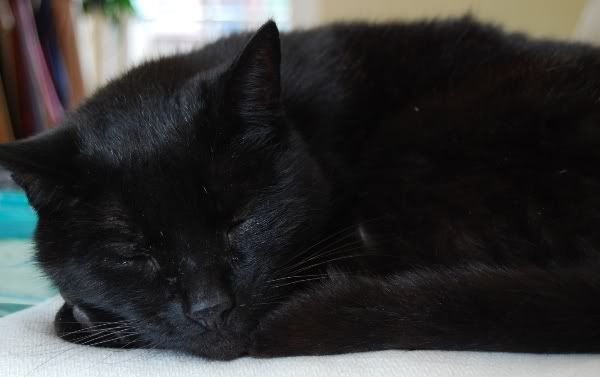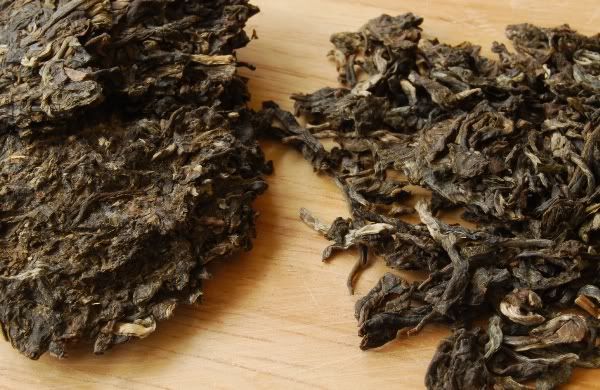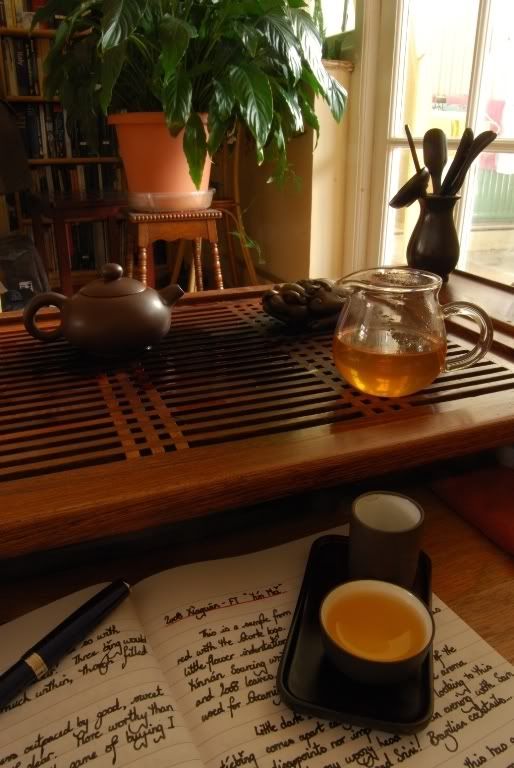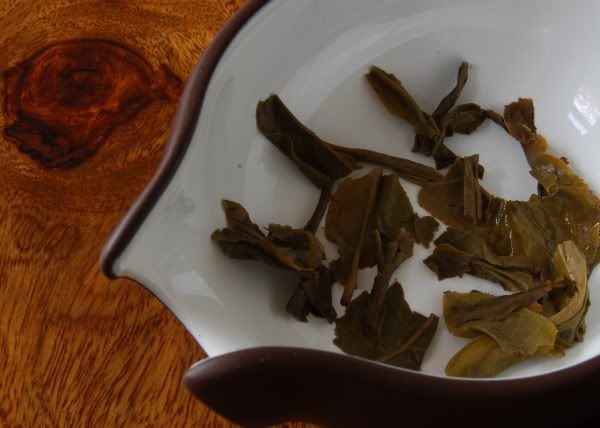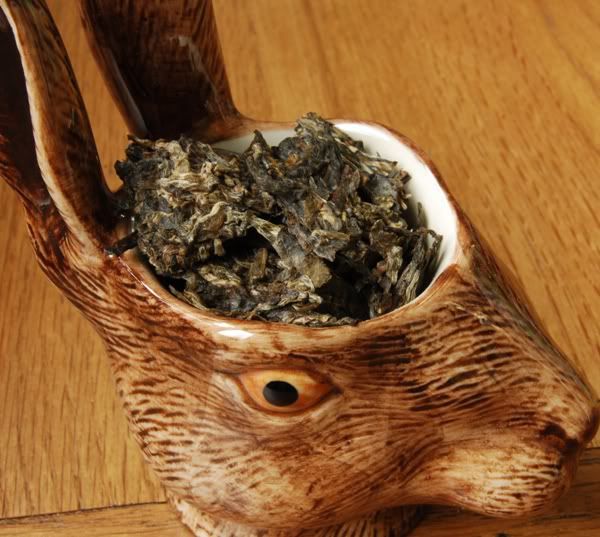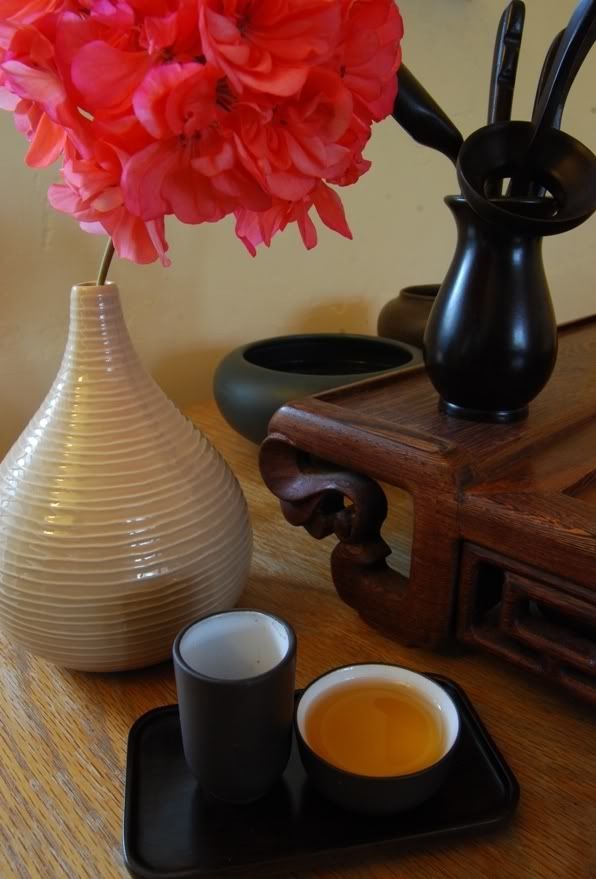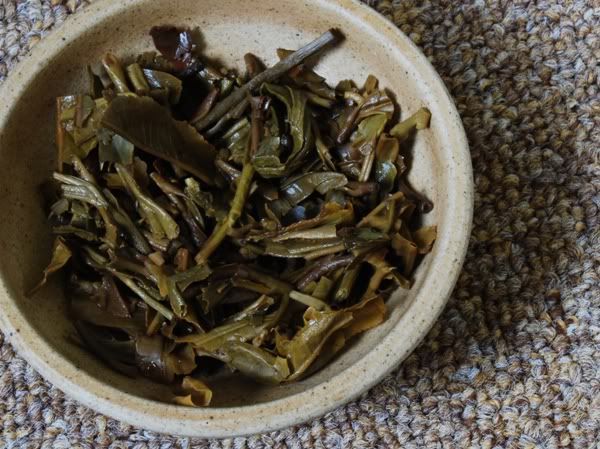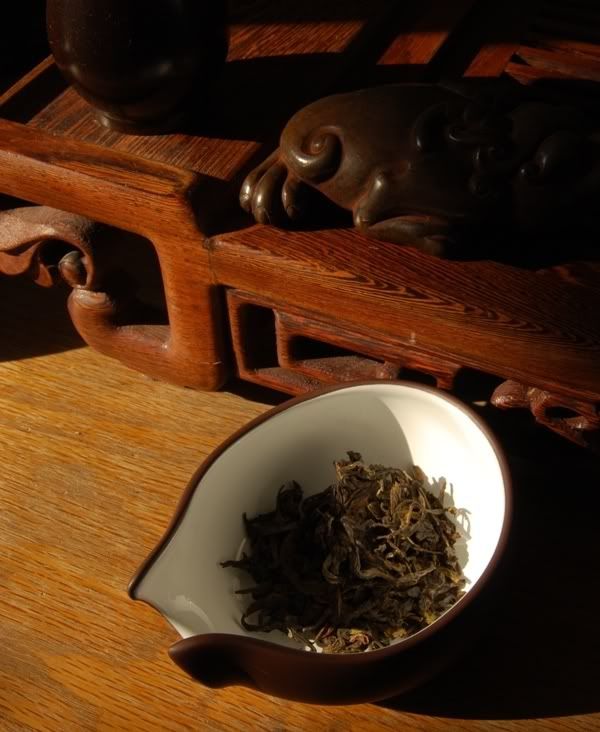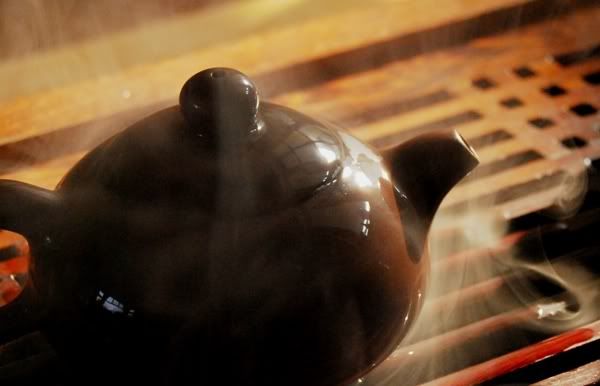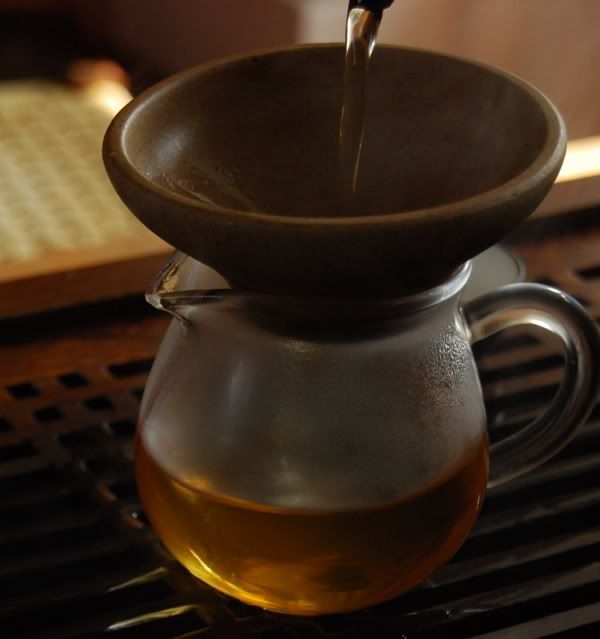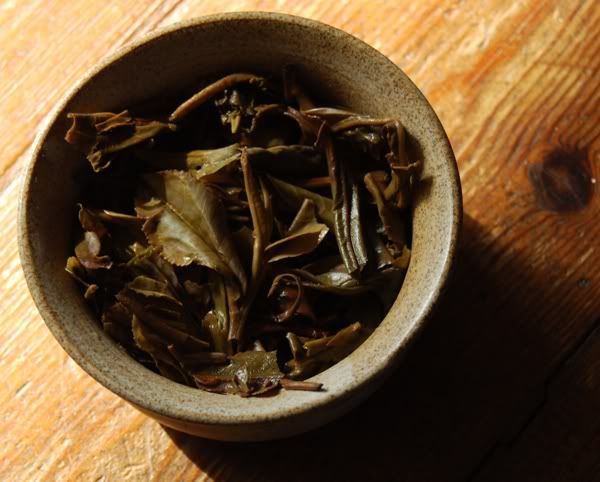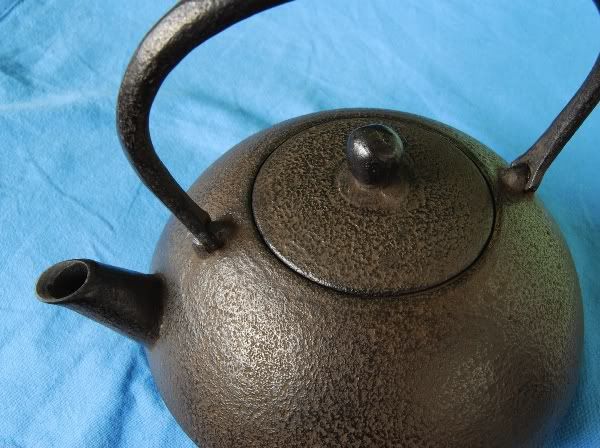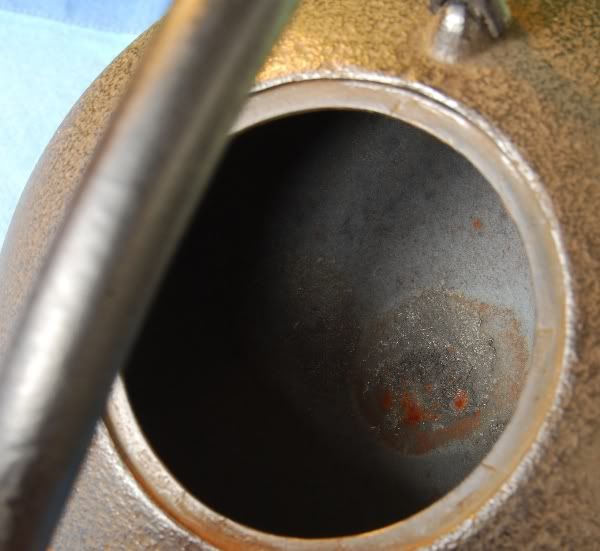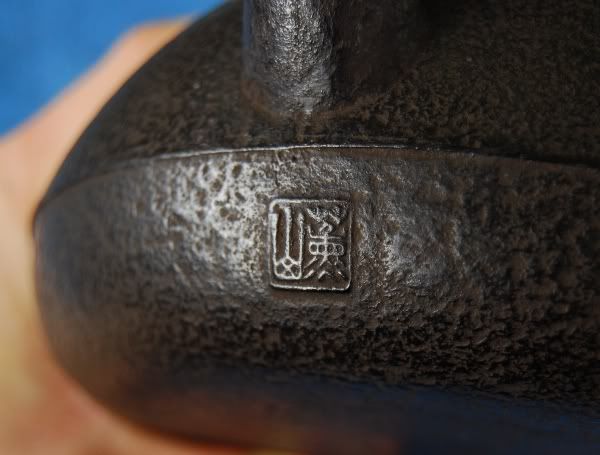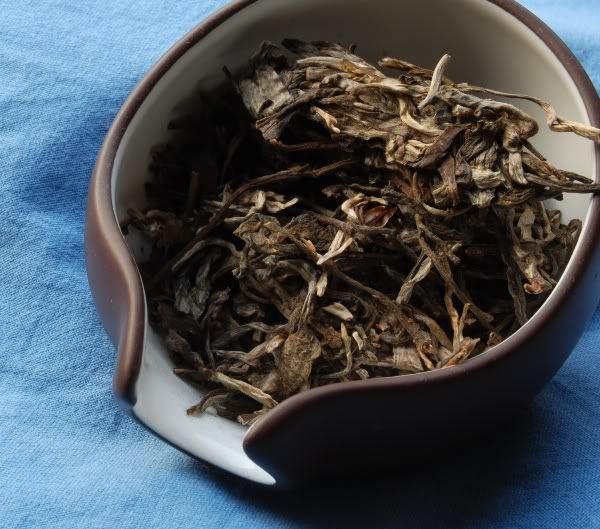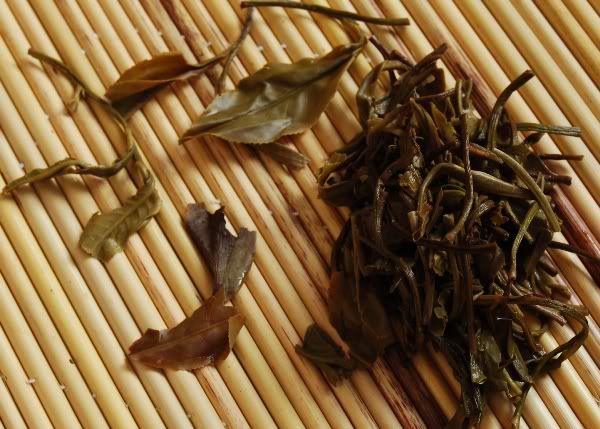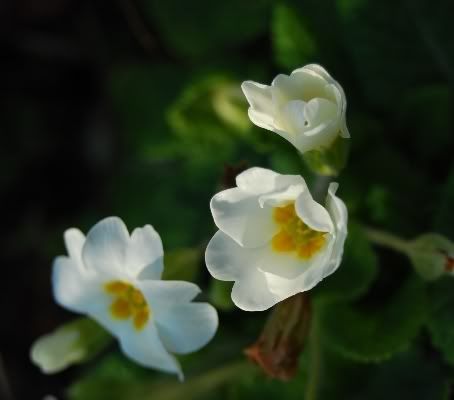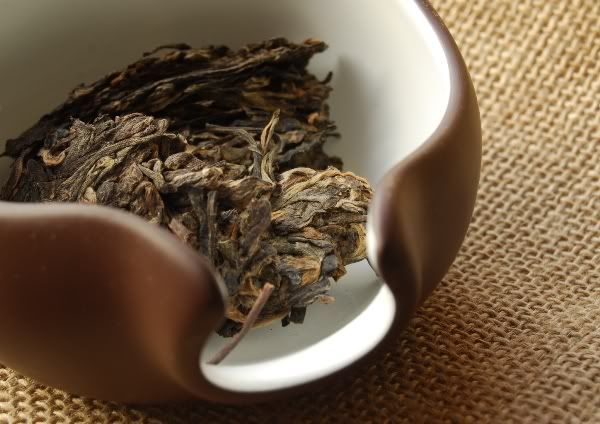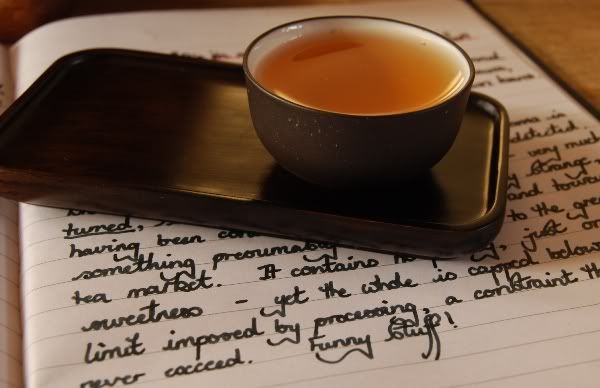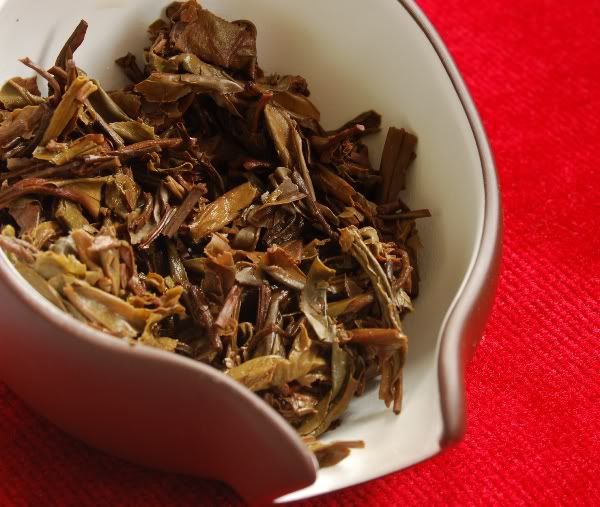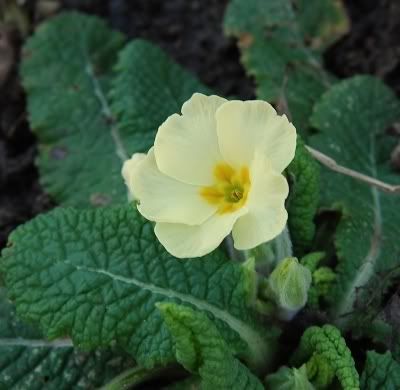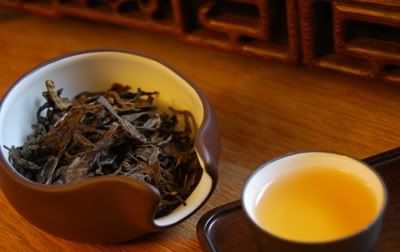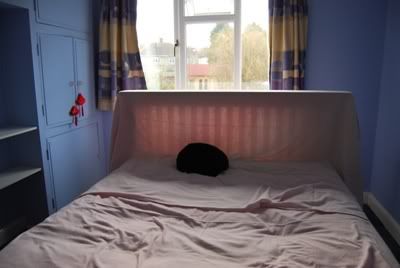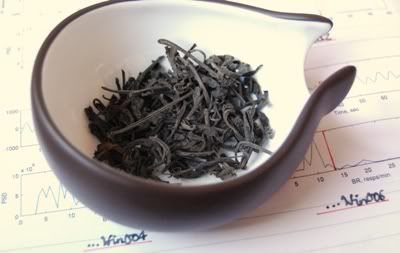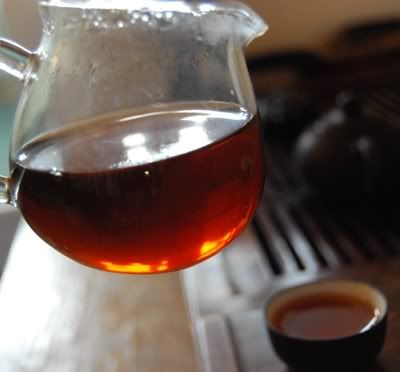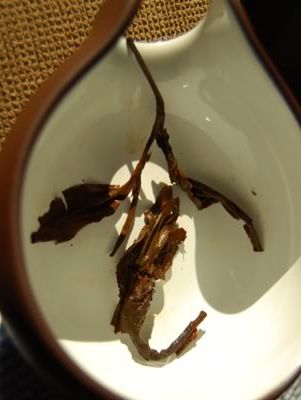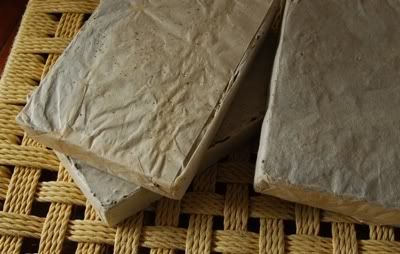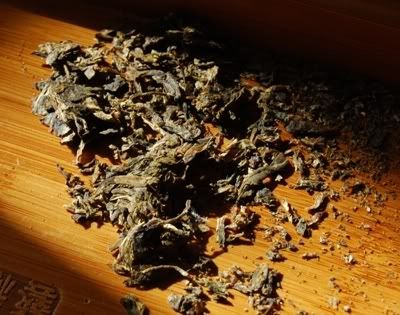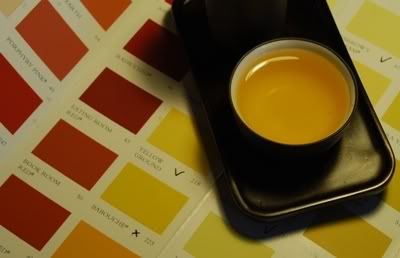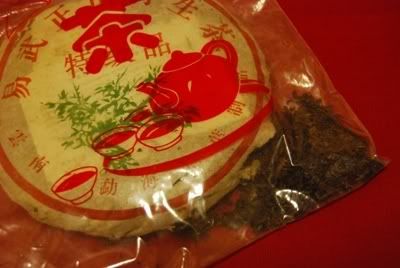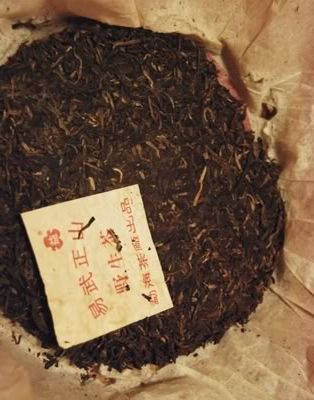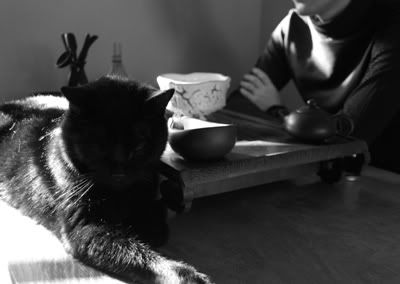I come to bury Xiaguan, not to praise them.
Oh, 500g cakes. With your weighty splendour - whenever did one of these massy beasts turn out to be anything other than disappointing? And yet, I run ahead of myself.
Xiaguan, purveyors of decent factory pu'er since time immemorial, now experimenting with all manner of concoctions - which of your many cakes are we supposed to enjoy? You spoil us with choice, and offer us no clues, for the gamut costs approximately the same throughout. Which are your good teas? Is this Yun Mei [cloud plum] a good tea? Have the madmen taken over the asylum, and five hundred "special" varieties produced every year without differentiation?
Xiaguan, purveyors of decent factory pu'er since time immemorial, now experimenting with all manner of concoctions - which of your many cakes are we supposed to enjoy? You spoil us with choice, and offer us no clues, for the gamut costs approximately the same throughout. Which are your good teas? Is this Yun Mei [cloud plum] a good tea? Have the madmen taken over the asylum, and five hundred "special" varieties produced every year without differentiation?
If fans of Xiaguan can exist, then I consider myself among them. Perhaps not entirely given over to their mass-produced, yet very decent, operations, I do love that "Xiaguan character". After experiencing so many of their minor variations on a theme, I feel that I have come to understand that theme - though due to nothing more than sheer, bloody-minded exposure.
If I were to say "this cake doesn't cost much, at $23", or "it's a special run created for the FT company of Taiwan", it would mean little, given that so much of the interesting output from Xiaguan is in the same category. If not FT, then XY, or somesuch other, but you understand.
Drinking Xiaguan is now something of a sport. It is an endeavour in trying to spot the tiny nuances that may or may not exist between any particular cake and the rest of their (sizeable) annual catalogue.
What, then, of the Yun Mei?
Shown above, I think you'll agree that it looks like a Xiaguan "special" cake. The leaves are small, they're quite tight (this is a tiebing - iron pressed, directly in the hydraulic mould without a sackcloth covering), and they have a sweet scent that neither impresses nor disappoints. For a tiebing, the leaves come apart surprisingly well.
If I were to say "this cake doesn't cost much, at $23", or "it's a special run created for the FT company of Taiwan", it would mean little, given that so much of the interesting output from Xiaguan is in the same category. If not FT, then XY, or somesuch other, but you understand.
Drinking Xiaguan is now something of a sport. It is an endeavour in trying to spot the tiny nuances that may or may not exist between any particular cake and the rest of their (sizeable) annual catalogue.
What, then, of the Yun Mei?
Shown above, I think you'll agree that it looks like a Xiaguan "special" cake. The leaves are small, they're quite tight (this is a tiebing - iron pressed, directly in the hydraulic mould without a sackcloth covering), and they have a sweet scent that neither impresses nor disappoints. For a tiebing, the leaves come apart surprisingly well.
I did like the 2008 Xiaguan XY 8853. That was good Xiaguan. Perhaps unfortunately for this Yun Mei, that 8853 remains in my memory, and the current brew seems a bit thin by comparison.
"Cloud Plum" indeed. I thought that this name was picked just because of the silly little daisy imprints in the tea-mould, but the tea itself is very floral, delicate, sweet... rather like classic Nannuo. Is it not a thing of wonder that pu'er, and tea in general, can take so many forms and characters, despite being just leaf?
"Cloud Plum" indeed. I thought that this name was picked just because of the silly little daisy imprints in the tea-mould, but the tea itself is very floral, delicate, sweet... rather like classic Nannuo. Is it not a thing of wonder that pu'er, and tea in general, can take so many forms and characters, despite being just leaf?
For Xiaguan, this is quite unusual tea, being so floral. In that, they have successfully found something to differentiate this cake from all the others. However, it's not a great example - it's a bit thin, it's a little sour (though I think that's my hangover, as Lei doesn't find it so), and it has more than its fair share of plantation roughness, gripping the walls of the mouth and throat.
There are some teas that, even though they are not incredible, I would be happy to own just a single cake. This Yun Mei is not one of those - I will not miss it, and will remember it only as "that slightly Nannuo cake from Xiaguan".
I come not, friends, to steal away your hearts. I am no orator; for I have neither wit, nor words, nor the power of speech to stir men's blood. I only speak right on; I tell you that which you yourselves do know.
Xiaguan Yun Mei: I bid you good day.
There are some teas that, even though they are not incredible, I would be happy to own just a single cake. This Yun Mei is not one of those - I will not miss it, and will remember it only as "that slightly Nannuo cake from Xiaguan".
I come not, friends, to steal away your hearts. I am no orator; for I have neither wit, nor words, nor the power of speech to stir men's blood. I only speak right on; I tell you that which you yourselves do know.
Xiaguan Yun Mei: I bid you good day.

